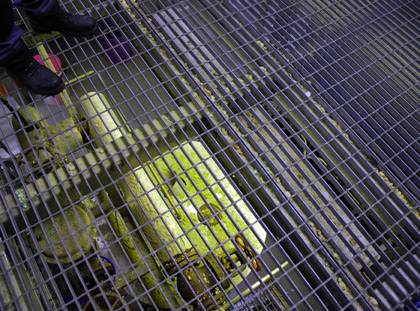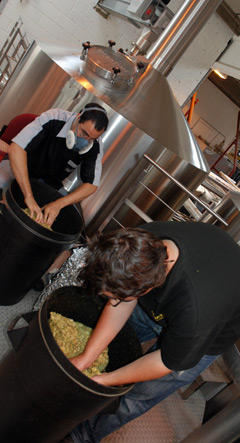Christopher Staten writes about “native ales” in the current DRAFT magazine (March/April, “25 Unexpected Getaways” on the cover). Even though the tagline here reads “celebrating beer from a place” I have to pause when considering his conclusion.
But in terms of the big picture — that “what story will they tell in 200 years?” question — native beers have the potential to define the American craft beer industry’s legacy.
That’s bold.
Although Lakefront Brewery’s Wisconsinite is made with all Wisconsin ingredients this is really a story about yeast.
Case in point: Vinland One. For the series’ first release, [Mystic Brewing founder Bryan] Greenhagen isolated a yeast strain from a Massachusetts plum he bought at a local farmers market. Called Winnie, the wild yeast imparts plum, mango and touches of spice to the saison base, giving it character more akin to wine. Technically, One isn’t an ale or lager; it’s something unique. Greenhagen’s also working on developing yeast cultures from blueberries in Maine for Vinland Two, slated for release this September, and berries and grapes from a family farm in Vermont. While the lack of local ingredients suited for his recipes (mainly noble hops) prevents him from brewing a complete native beer, his use of local, wild yeast makes Vinland exclusive to his region.
“Biodiversity can help us make our own unique beer,” he says. “Even though we work within the Belgian tradition, how can we bring that back to make things that are actually distinctive and, in some cases, beer you couldn’t make anywhere else?”
Hold that thought.
Now consider the news earlier this month that No-Li Brewhouse in Spokane, Washington, successfully lobbied for the “term and beer classification Spokane Style.” Spokane Style beer must be brewed and packaged in Spokane by Spokane residents and use all ingredients exclusively to the region (meaning from within 300 miles).
So just what is ‘Spokane Style’? “Like the Matrix, no one can be told what Spokane Style is”, said [co-founder John] Bryant with a laugh, “but you must taste.”
“When you pride yourself on using only the finest ingredients and the greatest attention to detail”, said co-founder and Head Brewer Mark Irvin, “you know what Spokane Style is. You can taste it.”
Can you taste it?
Why?
Does it matter?
These, in fact, are the questions I’ve been asking here for more than seven years. Maybe it’s time to get serious about finding some answers.

 Chuck Lenatti at Allbrews has posted the topic for
Chuck Lenatti at Allbrews has posted the topic for 
 That includes adding hops to the brewing kettle and the hopback. Oakham uses a good share of hops, American hops, in whole cone form.
That includes adding hops to the brewing kettle and the hopback. Oakham uses a good share of hops, American hops, in whole cone form.